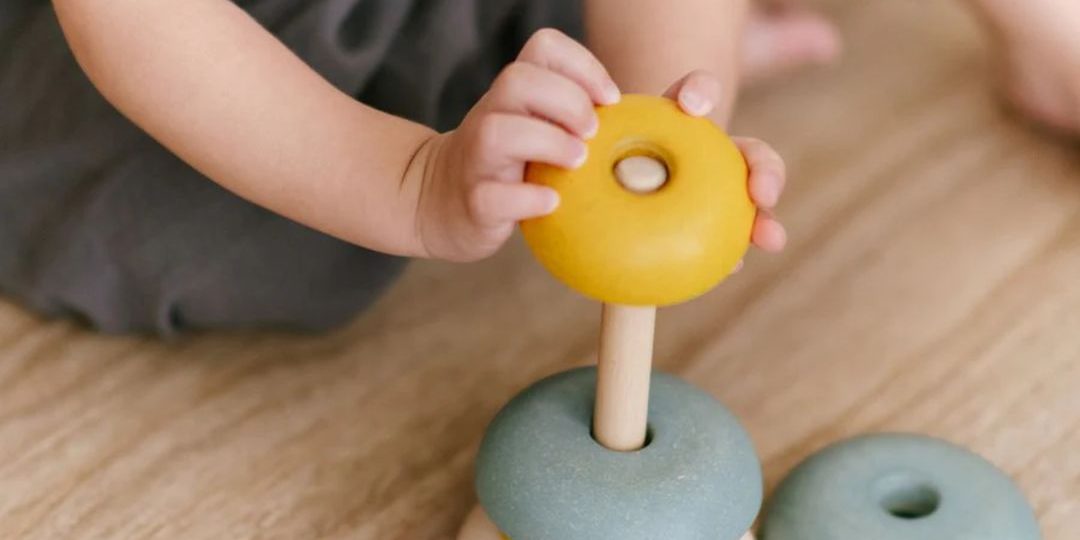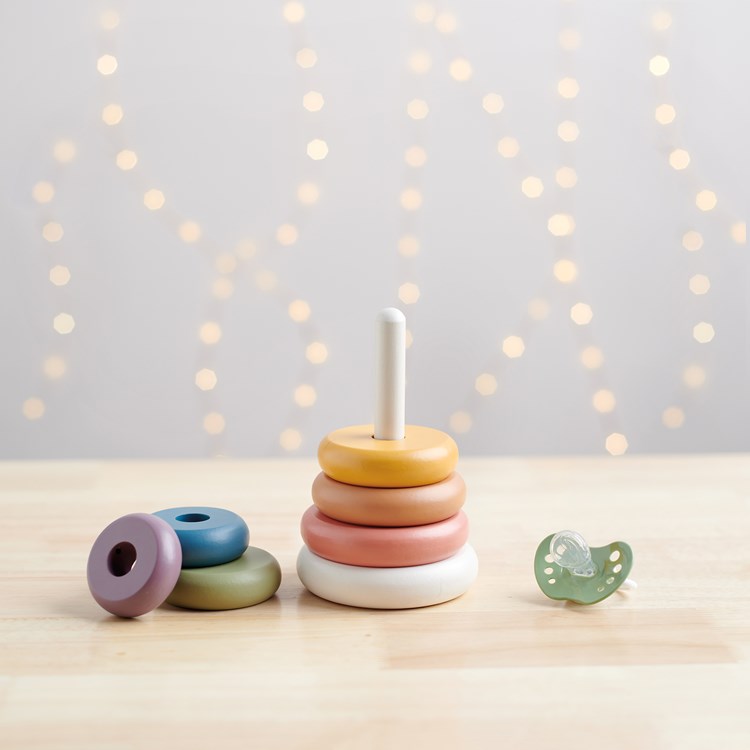
Mastering Ring Stacking Toys for Child Development
The Importance of Ring Stacking Toys in Early Education
Ring stacking toys are more than just playthings. They are crucial in early education for developing young minds and bodies. These colorful toys help to shape cognitive and motor skills in a fun, interactive way. When children engage with a ring stacking toy, they are not just passing time; they’re laying the foundation for future learning experiences.
Cognitive Development through Play
Playing with ring stacking toys boosts brain development. Kids learn about color, size, and shape as they handle the rings. This playtime is vital for cognitive growth. It fosters problem-solving and logical thinking as children figure out how to sort and stack. These toys challenge young minds, making learning an engaging activity.
Enhancing Motor Skills with Ring Stacking
Ring stacking also hones fine motor skills. Kids practice grip, control, and hand-eye coordination as they place rings on the peg. Their dexterity improves with each attempt. Stacking toys offer repetitive practice that is key in motor skill development. Such activities prepare little hands for writing, dressing, and other detailed tasks.
Selecting the Right Ring Stacking Toy
Selecting the right ring stacking toy is critical for supporting child development effectively. You want to choose a toy that not only captures their interest but also supports their growth stage appropriately.
Age-Appropriate Design Considerations
When choosing a ring stacking toy, the age of the child is a major factor. For infants, large rings with soft edges are best. They are easy to grip and safe for teething. As children grow, they can handle more complex toys with smaller rings. Look for a ring stacking toy that challenges them yet is not too difficult to frustrate them.
Toys with bright, contrasting colors can help very young children in distinguishing different pieces. As they get older, toys with a mix of colors and sizes add an extra layer of difficulty and help with learning comparison and sorting.
Safety Features in Stacking Toys
Safety is paramount when it comes to selecting any toy for young children. Ring stacking toys should be made of non-toxic materials. Check for quality seals or certifications that guarantee the safety of the toy. Also, ensure that there are no sharp edges or small parts that could become a choking hazard. Sturdy construction is also important to withstand the rigors of play without breaking apart. Lastly, make sure the rings fit securely to avoid trapping little fingers.
Choosing the right ring stacking toy involves considering the child’s age and ensuring the toy is safe and suitable for their developmental stage. With the right toy, children can enjoy hours of safe, beneficial play that boosts their cognitive and motor skills.
Step-by-Step Guide to Introducing Ring Stacking Toys
Introducing a ring stacking toy to a young child involves a few careful steps. These steps ensure that the child enjoys the toy and learns from it. This guide will help you set up a successful play environment and encourage your child to play and persist with their new toy.
Setting Up for Successful Play
First, choose a safe and comfortable play area. It should have plenty of space for your child to reach and move around. Soft mats or rugs can cushion any falls and prevent ring pieces from rolling too far. Make sure the play area is free from distractions. This helps your child focus on the ring stacking toy.
Start with a quick demonstration. Show them how to stack and unstack the rings. Keep your actions slow and deliberate. This will make it easier for your child to understand and imitate. Lay out the rings in order of size, and encourage your child to try it themselves.
Offer praise for any attempt, no matter how small. Use clear, positive words. Say things like ‘Good job!’ or ‘You’re doing great!’ This builds their confidence.
Encouraging Independent Play and Persistence
To foster independence, step back and let your child explore the toy. Resist the urge to correct their stacking order. This allows them to learn through trial and error. If they struggle, offer hints, but do not complete the task for them. Encourage your child to keep trying, even if they don’t get it right away.
For persistence, make the play fun and not too difficult. Challenge them with different stacking sequences as they get better at it. Turn it into a game, such as ‘Can you find the biggest ring?’ or ‘What happens if we stack them this way?’
Remember, every child learns at their own pace. Celebrate small victories and encourage continued play. With time, your child will master the ring stacking toy. This builds their confidence and prepares them for more complex tasks ahead.
Educational Benefits of Ring Stacking Activities
Ring stacking toys are not just about play, but also about learning. These toys teach kids important concepts while they have fun. This section covers how these activities aid in learning colors and sizes, as well as understanding sequences and patterns.
Recognizing Colors and Sizes
Introducing a ring stacking toy can start a child’s journey with colors and sizes. These toys often come in vibrant hues, grabbing a child’s attention. As they play, children learn to identify and name different colors. This is essential for their vocabulary growth.
By stacking rings from the largest to smallest, kids also grasp the concept of size. They see first-hand how smaller rings cannot go on top of larger ones. This teaches them about order and relative size, a key math skill.
Understanding Sequences and Patterns
Ring stacking toys also teach kids to recognize patterns and sequences. They learn that rings must be placed in a certain order to fit correctly. This is the start of logical thinking. Understanding sequences and patterns now can help them in math and science lessons later.
As they repeat the task, their ability to follow and predict patterns improves. Simple actions of sorting and stacking lay the groundwork for complex problem-solving abilities. By mastering these skills during play, children strengthen their cognitive functions in enjoyable and effective ways.
Making Ring Stacking Engaging
To keep children engrossed, it’s important to make the play with a ring stacking toy lively and interesting. Making the experience enjoyable encourages kids to spend more time playing, learning, and developing key skills. Here are some ways to infuse fun into ring stacking activities.
Fun Games and Challenges with Stacking Rings
Introduce games that make use of the ring stacking toy to create an exciting challenge. For instance, ‘Ring Race’ where children stack the rings as fast as they can or ‘Color Quest,’ requiring them to stack by colors. Another game is ‘Stack High,’ challenging kids to build the tallest stack without it toppling over. These simple games help in refining motor skills and quick thinking.
Variation in play is key. Mix up ring sizes or colors and ask children to follow a specific pattern. Challenges like these spark creativity and problem-solving. As children conquer these games, they feel a sense of achievement that furthers their desire to play and learn.
Incorporating Stories and Themes in Play
Adding a narrative can transform ring stacking into an adventure. Create a story where each ring is part of a treasure or a building block for a castle. Encourage kids to come up with their own tales. This imaginative play stirs creativity and helps with language development.
Themes can also revolve around seasons, holidays, or even their favorite animals. For example, assign animal names to different colored rings and create a story around the animal kingdom. This method not only makes playtime more fun but also expands their knowledge and vocabulary.
By weaving fun games, challenges, and stories into the use of a ring stacking toy, play becomes more than just an activity. It turns into a rich, multidimensional experience that contributes greatly to a child’s growth and happiness.
Integrating Ring Stacking Toys with Other Educational Activities
To further enhance the value of ring stacking toys in child development, it’s beneficial to integrate them with other educational activities. This integrated approach promotes a more holistic development, touching on various areas of a child’s growth.
Complementary Toys for Holistic Development
When integrating ring stacking toys with other educational toys, consider options that complement the skills ring stacking enhances. For instance, puzzles can continue the growth of problem-solving skills, while building blocks can further advance spatial awareness and creativity. Factor in toys that encourage numeracy, such as counting beads, since they align well with the ordering and sorting skills obtained from ring stacking. Books with bright pictures can be paired with color identification in ring stacking for a richer learning experience.
Toys that mimic real-life objects, like play food sets, can also be combined with ring stacking to develop role-playing and imaginative skills. Consider quality-made, non-toxic toys that share the safety aspects of ring stacking toys to ensure consistent protection during playtime.
Building Teamwork and Social Skills
Ring stacking toys can also be leveraged to cultivate social skills and teamwork. Engage children in group activities where they take turns stacking rings, or work together to achieve a common goal, like building the tallest stack. This teaches patience, sharing, and cooperation.
Parents and educators can create scenarios where children play specific roles, such as a ‘stacking master’ or a ‘color coordinator,’ to emphasize collaborative play and communication skills. This approach helps children to appreciate the value of working together and lays the groundwork for successful social interactions in various settings.
Troubleshooting Common Challenges
When children play with ring stacking toys, they may face some challenges. It’s important to know how to address these to maintain a positive and productive play environment.
Overcoming Frustration and Building Confidence
Children often feel frustrated when they can’t stack the rings correctly. To help them:
- Stay Calm: Show children it’s okay to make mistakes.
- Encourage Attempts: Praise their efforts, not just success.
- Break it Down: Simplify the task into smaller steps.
- Lead by Example: Let them see you try and make errors too.
As children overcome these obstacles, their confidence will grow. They’ll learn that persistence pays off, which is a valuable life lesson.
Adapting Play for Different Skill Levels
Not all children are at the same development stage, so it’s crucial to adapt play:
- Modify Rules: Change the games to fit their abilities.
- Use Assists: Add labels or color cues to guide them.
- Create Levels: Start with less rings and add more as they improve.
- Offer Choices: Let them choose how to stack the rings.
By adjusting the activity to meet their skill level, children will feel more in control and motivated to play. This helps ensure that the ring stacking toy remains a source of both fun and learning.


